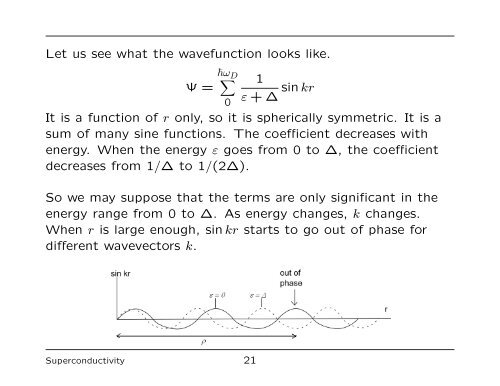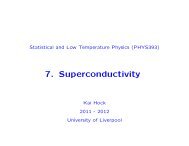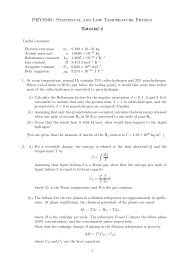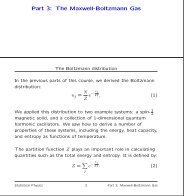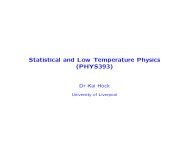The Nature of the Cooper Pair - University of Liverpool
The Nature of the Cooper Pair - University of Liverpool
The Nature of the Cooper Pair - University of Liverpool
You also want an ePaper? Increase the reach of your titles
YUMPU automatically turns print PDFs into web optimized ePapers that Google loves.
Let us see what <strong>the</strong> wavefunction looks like.<br />
Ψ =<br />
�ω<br />
�D<br />
0<br />
1<br />
ε + ∆<br />
sin kr<br />
It is a function <strong>of</strong> r only, so it is spherically symmetric. It is a<br />
sum <strong>of</strong> many sine functions. <strong>The</strong> coefficient decreases with<br />
energy. When <strong>the</strong> energy ε goes from 0 to ∆, <strong>the</strong> coefficient<br />
decreases from 1/∆ to 1/(2∆).<br />
So we may suppose that <strong>the</strong> terms are only significant in <strong>the</strong><br />
energy range from 0 to ∆. As energy changes, k changes.<br />
When r is large enough, sin kr starts to go out <strong>of</strong> phase for<br />
different wavevectors k.<br />
Superconductivity 21


